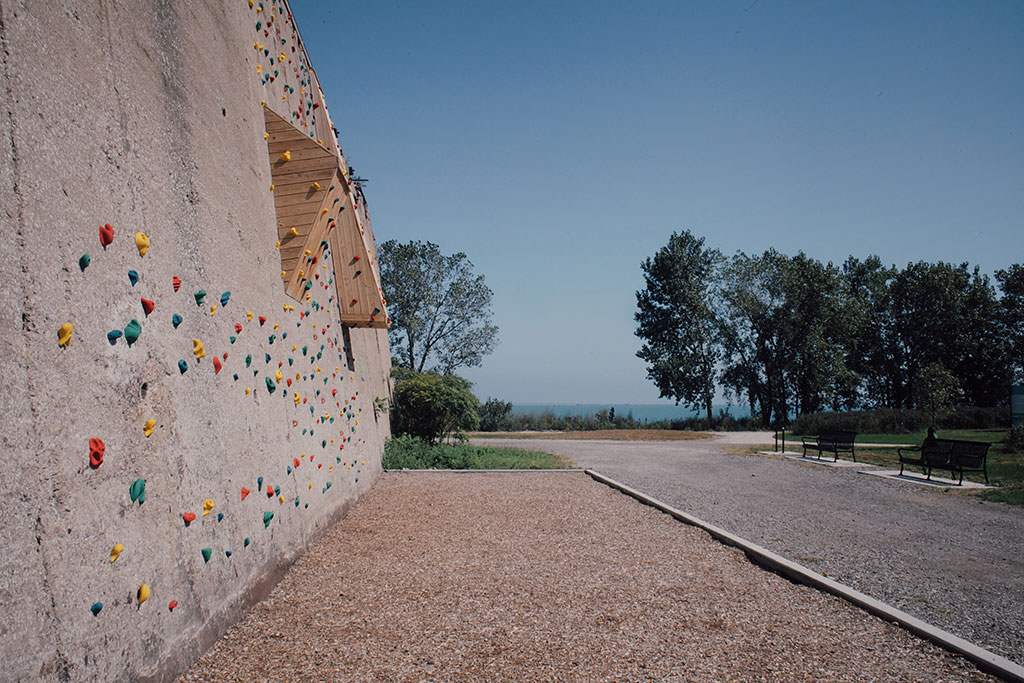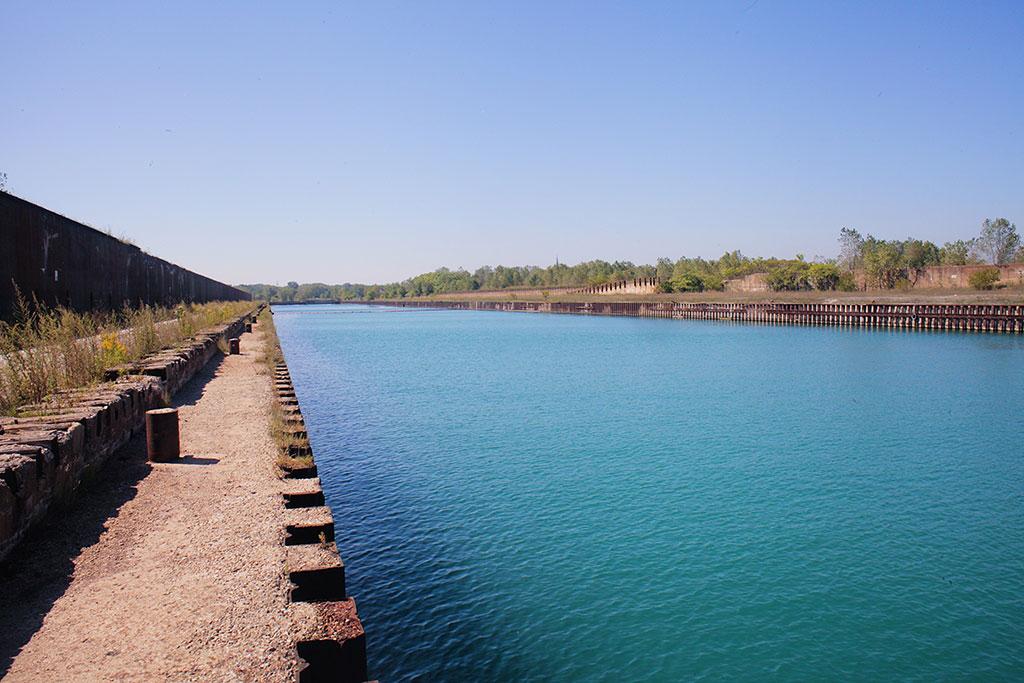Long before it was Steelworkers Park, the little plot of slag at the confluence of Lake Michigan and the Calumet River was part of South Works: a U.S. Steel manufacturing plant that employed 20,000 workers at its zenith.
For more than a hundred years, these men and women were part of the “building, breaking, rebuilding” ethos Carl Sandburg immortalized in his 1914 poem “Chicago.” Production at the plant began to slow during the 1970s, and it ultimately closed in 1992. For the next two decades, all that remained was a series of hulking concrete ore walls standing silently against the shore.
But thanks to the Chicago Park District’s mandate to expand the city’s natural areas, this acreage that used to lie fallow and in decline has been reclaimed as parkland for all Chicago residents to enjoy.
And those ore walls? They’ve become climbing routes that offer top-roping, auto-belays and bouldering for those who want to hone their skills or are simply looking for an introduction to the sport.

Photo Credit: Seth Putnam
The new climbing wall opened softly in July, with a ribbon cutting by Mayor Rahm Emanuel planned on a date still to be determined. The Park District plans to host open climbs on the auto-belay system in the spring and through 2019. Dates are still to be determined, but Chicagoans will be able to register through the Steelworkers Park website; in the meantime, experienced climbers can go for a lead climb on their own.
The wall tops out at 40 feet tall, with color-coded, modifiable routes that the Park District plans to change up every six months. There are also built-in challenge elements, including a 90-degree overhang and a 45-degree pitch. As of July, the difficulty of the routes ranged from 5.2 to 5.7.
“There’s something for everyone,” says Matt Freer, assistant director of landscape and natural areas for the Chicago Park District. “There are easy routes straight up the face, and we made some improvements in an existing crack in the wall so you can wedge your fingers and toes if you want to challenge yourself.”
Climbers can also check out the bouldering element, where “there are plenty of problems to solve without having to get too high,” Freer says.
Part of a larger strategy
The recent development at Steelworkers Park is the latest in a series of Park District initiatives aimed not just at conservation but stewardship. “We manage with people in mind,” Freer says. “While we do have places where we prefer people stay on the trail, we’re not strictly about conservation.”
A few years ago, Mayor Emanuel set a goal for the Park District to expand its natural areas to 2,020 acres by the year 2020. Less than a year and a half out, Freer says there are only about 200 acres to go. “Natural areas” include prairies, forests, woodlands, savannas and lagoons. They can be as small as a quarter of an acre or as large as the 278 acres of Big Marsh (which features wetland and dolomite elements, along with a bike park).
As Freer sees it, the Park District’s goal is to protect Chicago’s wild spaces, yes, but with a focus on the humans who use them. “These parks are backyards for Chicagoans who don’t have them,” he says. “The mission of the Natural Areas program has shifted in the last two or three years from the preservation model you think of to participation.”

Photo Credit: Seth Putnam
Rewilding Our Cities
But first, Chicagoans have to learn that these spaces exist. “There’s a misconception about a ‘lack’ of outdoor spaces,” Freer admits. “It’s a tough challenge to tackle, and we’re telling our story everywhere we can.”
As part of its Rewilding Project, REI has teamed up with the Park District in an effort to beef up the marketing and branding around outdoor spaces on the southeast side of the city. “Our funding to [Chicago Park District] over the past two years has been a total of $100,000 to create awareness about the ways we’re recreating, reconnecting, rethinking and rediscovering these spaces,” says Theresa Salus, REI’s outdoor programs manager for the Chicagoland region. “People want to be outside around trees and plants, and we have a responsibility to the health of the community, to the health of the city and to the health of the country to take these lands and repair them.”
So far, the impact has been measurable. After sitting unused for the better part of two decades, Steelworkers Park has been the site of significant remediation work in partnership with the State of Illinois, which dredged a dam upstate and sent the leftover mud to the park on a barge so conservationists could create a clean “cap” of earth over the slag left behind from the steel plant. They planted native Buffalo grass, restored some artifacts from the old plant and commissioned a “Tribute to the Past” sculpture by Chicago artist Roman Villarreal in homage to the South Works employees of old. Chicago Park District has also made it a point to hire local residents both seasonally and year-round to work on restoration projects. These days, the park has become a popular location with model airplane flyers and parents teaching their kids how to ride bikes.

Photo Credit: Seth Putnam
The Natural Areas program measures its success not just in terms of human use, but by the presence of new feathered friends, too. Not far away, Big Marsh has become an avian sanctuary that counts three pairs of gallinules among its residents (secretive nesting birds that Freer says haven’t been seen here in 20 years).
“There’s a whole continuum of outdoor recreation and nature experiences on the southeast side,” Freer says. “There are so many benefits to spending time in nature, both mentally and physically, and we want to provide that resource to Chicagoans without having to go to Wisconsin or even suburban Cook County.”
It’s all waiting.
